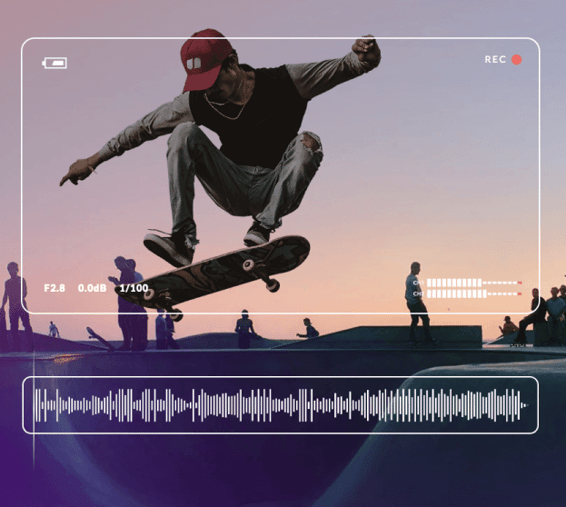Welcome to Outstanding
Royalty Free Meditation Music






Listen to Our Best Royalty Free Meditation Music
We know the right song can make or break your project. That’s why every track in our library is vetted by award-winning producers. Hear for yourself. We've curated a playlist with our best meditation music.
Looking for something different?
We got you. From classical to hip hop to indie, our audio library contains thousands of outstanding tracks. Use one of our 13 filters or check out other curated playlists to find what you need in minutes.
BROWSE THE FULL CATALOG
Dead Simple Licensing
Never worry about licensing again. With Soundstripe, your membership covers the cost for every song license. Just find the right track, download the file, and get a custom license. That’s it. No channel or media-specific fees, no recurring royalties, ever. Here’s more good news: you have unlimited licenses. Go ahead, download as many songs as you want.
The On And Off-Screen Impact of Royalty Free Meditation Music
When it comes to music, there are certain moments in life (but more specifically film) that demand high energy — say, an electronic charge of dubstep or hype music.
You might integrate this type of music into a project to enhance the action happening on-screen. Or maybe in your downtime you listen to this type of music for an adrenaline boost.
Whether on-screen or off, the aim here is to find the music that best complements the moment.
In a hyper-socialized and digitized society, our brains are constantly stimulated by an influx of new ideas and information. Trying to keep pace with this new content, however, can leave us feeling more overwhelmed than engaged.
The same principle holds true for creative projects — there has to be an ebb and flow of energy and action.
Both in professional and personal practice, meditation music can enhance moments when we need to step away from the action and make time for mindfulness.
By integrating meditation music into your project, you can create this sense of balance and enhance moments of calm and reflection.
As you prepare to take on your next film, podcast, or other project, we’re here to help simplify the music licensing process for you.
Before highlighting a few artists in our staff-curated meditation playlist, this piece offers some context on the origins and effects of meditation.
The Ancient Roots of Western Meditation
Meditation is historically and culturally rooted in ancient Asian spiritual practices. And though it has been around for thousands of years, the practice wasn’t popularized in the western hemisphere until the mid-20th century.
In the Netflix series Headspace: Guide to Meditation, Andy Puddicombe — former Buddhist monk and co-founder of Headspace — uses the analogy of sitting on the side of the road and watching cars pass to describe meditation.
The purpose of the practice is to acknowledge the cars (your thoughts), rather than ignore them.
But, as Puddicombe points out, “What usually happens is that we feel a bit unsettled by the movement of the traffic. So we run out into the road, and we try to stop the cars...forgetting that the idea was to just sit there.”
When you notice that your mind begins to chase after or dwell on any single thought, you respond by re-centering your attention on a focal point. You become an objective third party who recognizes these distracting thoughts without overindulging in them.
This practice has been widely adopted in the U.S. as a means of reducing stress, improving focus, and stepping away from the hustle and bustle of everyday life.
But its increased popularity also led to increased skepticism.
In the next section, we share some of the key findings by researchers who set out to test whether the benefits of meditation came from a placebo effect or something more.
The Connection Between Mindfulness & Neuroplasticity
For decades, researchers have conducted studies to determine what effects (if any) meditation has on the brain.
In one study, researchers analyzed the brain activity of a group of Tibetan Buddhist monks who had been practicing meditation for 8 to 33 years.
From the fMRI results, the team reported that both the extrinsic and intrinsic networks of the brain were active during meditation — meaning that meditators could process external stimuli and internal stimuli at the same time.
This finding is significant because in non-meditative states our brains typically prioritize one type of stimuli over the other. As a result, we can become more inattentive and easily distracted.
In the video above, neuroscientist Dr. Sara Lazar discusses her research on the link between meditation and changes in brain structure.
Not only does meditating consistently over the course of several weeks make you feel better, it actually alters areas of your brain that control memory, decision-making, and emotion regulation.
This phenomenon of the brain re-shaping over time is otherwise known as neuroplasticity.
On the whole, these research findings affirm that the benefits of meditation are real and measurable. Additional research has also shown that music affects the brain in a similar way, specifically by reducing stress and anxiety.
So it makes sense that meditation music delivers value both on and off-screen.
Whether you’re setting the tone for a guided meditation or cinematic moment, the right music can help you and your audience engage more meaningfully and mindfully in the current moment.
A Closer Look Into Soundstripe’s Meditation Playlist
To make sure you have all you need as a creator, we’re highlighting a few of our favorite meditation songs from talented Soundstripe artists below:
The Realist
-
Astral Journey: Low energy and ambient sounds produced with guitar and synth instruments.
-
Niagara: Best described as reflective and sad, the primary instruments for creating this low energy song were the electric guitar and guitar.
-
Lobero: Acoustic sounds with a reflective and calm feel, brought to you by guitar and acoustic guitar.
Acreage
-
Endless Ocean: A very low energy, ambient song produced with strings and piano.
-
Alps: Characterized as chill and reflective, this song was produced with ambient tones and synth.
-
Planets: Strings and ambient tones are the primary instruments behind this reflective and calm song.
Falls
-
Every Now and Zen: Meditation music with a hopeful and calm feel courtesy of synth and ambient tones.
-
Sacred Ground: A sad and reflective song produced with guitar and strings, primarily.
-
Mindfullness: A low energy, ambient song best described as chill and reflective, produced with synth and ambient tones.
License Royalty-Free Meditation Music Stress-Free
With a monthly or annual subscription, you can forego lengthy music licensing negotiations and license any song for any project.
If you’re in search of low energy meditation music for an upcoming project, the music library is stocked with quality options that range in mood, genre, and characteristic.
For full access to Soundstripe’s meditation playlist, click here.


Have questions? Give us a call
855.224.0847
Soundstripe - Unlimited Music for Video
© 2017-2020 A Product of Soundstripe, Inc
Nashville TN



